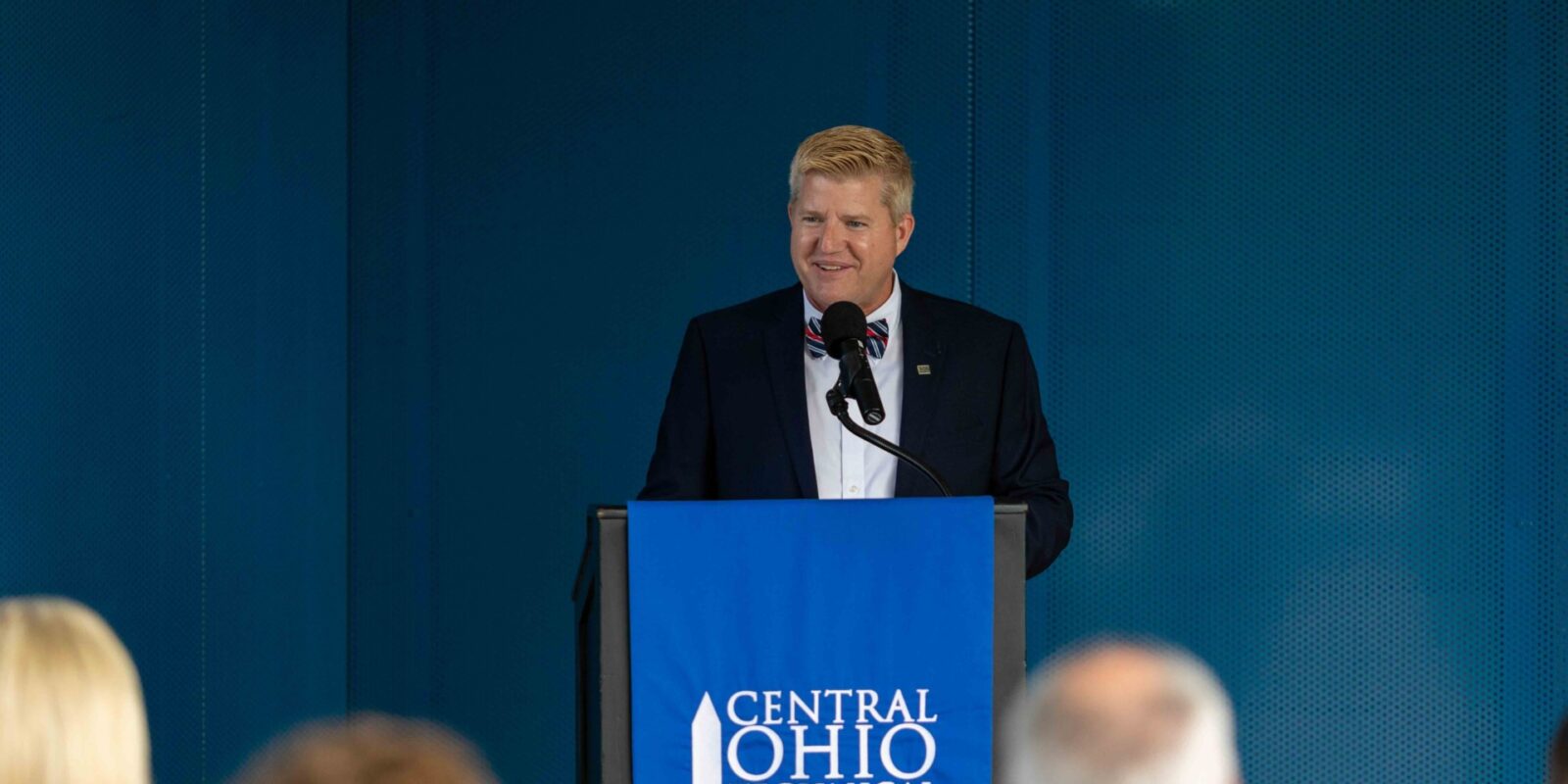In an era driven by agility and speed, John M. Berry’s “Be here now” mantra has been a key principle to his success. Modeled by his advisor, the late Professor Emeritus Robert ‘Bob’ Rodgers, Berry finds that being in the moment encourages connections that create greater and enriched ideas.
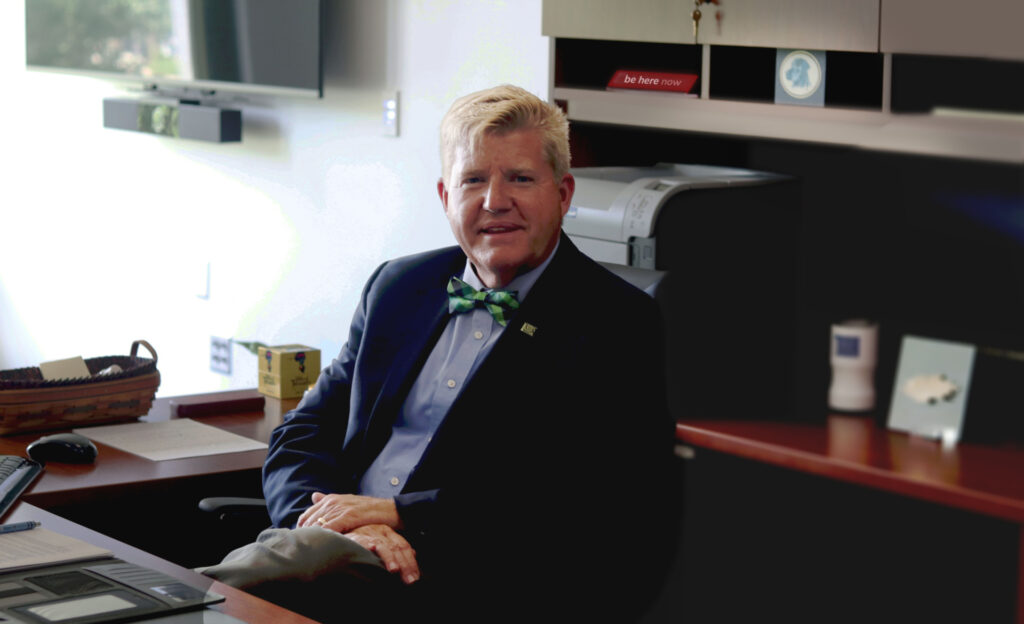
The president recognizes that the college resides in a revitalizing region, where industries and organizations hunger for the skilled workers of “now.” He works to balance the immediacy of the present with the needs of the future.
“One thing that we have to do in today’s world order is be fleet of foot,” said Berry, ’09 PhD. “You have to be adaptable, ready to change but continue the core teaching you already do and ensure it’s applicable to those industry sectors.”
Case in point, Intel is gearing up a massive microchip manufacturing plant just north of Columbus. Before manufacturing had even begun, the company called on the college to discuss its need for expert engineering technicians.
“We had to start learning about each other quickly,” Berry said. “We conducted curricular mapping as our first point of connection. I joke with my friends at Intel that I need my part-time employee’s badge because I’m spending at least 20 hours a week with them, and we do spend that kind of time to learn what an engineering technician does in semiconductor work.”
As a result, the college’s engineering program has tripled its enrollment, he said. And Intel, whose name is short for integrated technology, wants the college to continue that growth trend in the next 10-year cycle. Current and prospective students can seize the chance to integrate into a high-tech world.
“This whole central Ohio region is growing so quickly,” Berry said. “I love it when Intel calls us all the Silicon Heartland.”
Blended approach: Technical skills with teamwork
In addition to teaching technical skills, Berry emphasized the importance of teaching teamwork at all levels of education to solve problems and be productive.
“Our first student group in Semiconductor 101 was giving their final project presentation, and we invited Intel to come,” he said. “They sent six people, and when the question-and-answer time arrived, half of the questions weren’t around the technical aspects, but were around team building.”
“They’re as focused on team connections, on the viability of networks and systems, as they are on technical proficiency.”
You might be excellent at what you do, Berry said, but people might not want you on their team if you can’t contribute in that dynamic way. “So we’re teaching those soft/career-ready skill sets as well.”
“If we learn to work better together on the job, maybe we’ll begin to work better together outside of the career environment. We are creating community during a divisive time.”
Finding his path: Educators guide the way
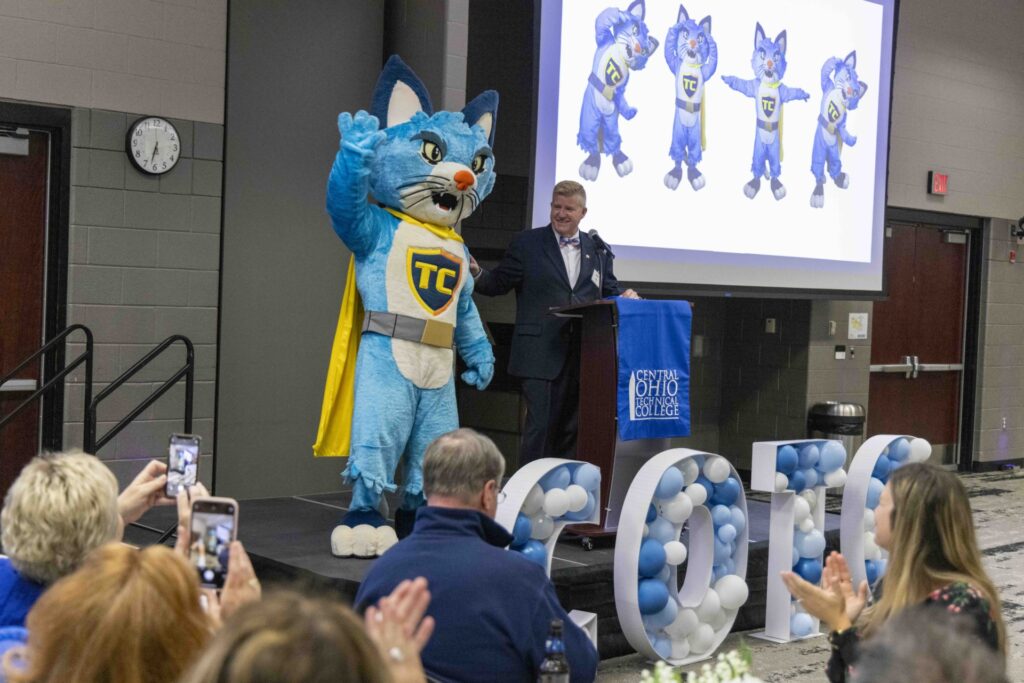
Berry said he draws every day on what he learned in the college’s PhD program in Higher Education and Student Affairs. He started on that path as the son of a U.S. Marine Corps service member who ultimately rose to the rank of sergeant major. His dad transferred often, so, every time the family moved, Berry was the new kid in school.
At his first elementary school in Washington, D.C. — a public school, not on base — he was one of only four white students. Berry remembers the first day when he walked into school, how unsettling it was to be in the minority. But the teacher intervened, helped him find his place, and gradually, he made friends.
By the time he graduated high school, Berry had lived in almost every state on the east coast. He also had learned an essential lesson.
“Educators were the important people in my life (who) helped me navigate and guided me through life,” he said. “In every school that I went to, educators helped frame what life could or should be like.”
He wasn’t sure that he wanted to be a teacher, but he thought he could do something to impact education.
Meeting the sherpas of higher education
Berry’s high school teachers recognized his potential, so, they encouraged him to go to college. They recommended nearby Coastal Carolina Community College.
He found the two-year college to be an excellent proving ground. The academic experience reinforced his scholarly ability. Faculty and staff guided him through the maze of the higher education system.
“Filling out financial aid forms, registering for courses, all those things … can be very intimidating, especially for a first-generation individual,” Berry said. “I recognized how important the people were at the institution, to explain, to nurture, to guide. They were almost like the sherpas of higher education… they also were very good about helping you navigate transferability.”
His advisors recommended he go to the University of North Carolina at Wilmington, since Coastal Carolina was a main feeder school. Berry took the plunge and enrolled.
Higher education? Is that a real job?
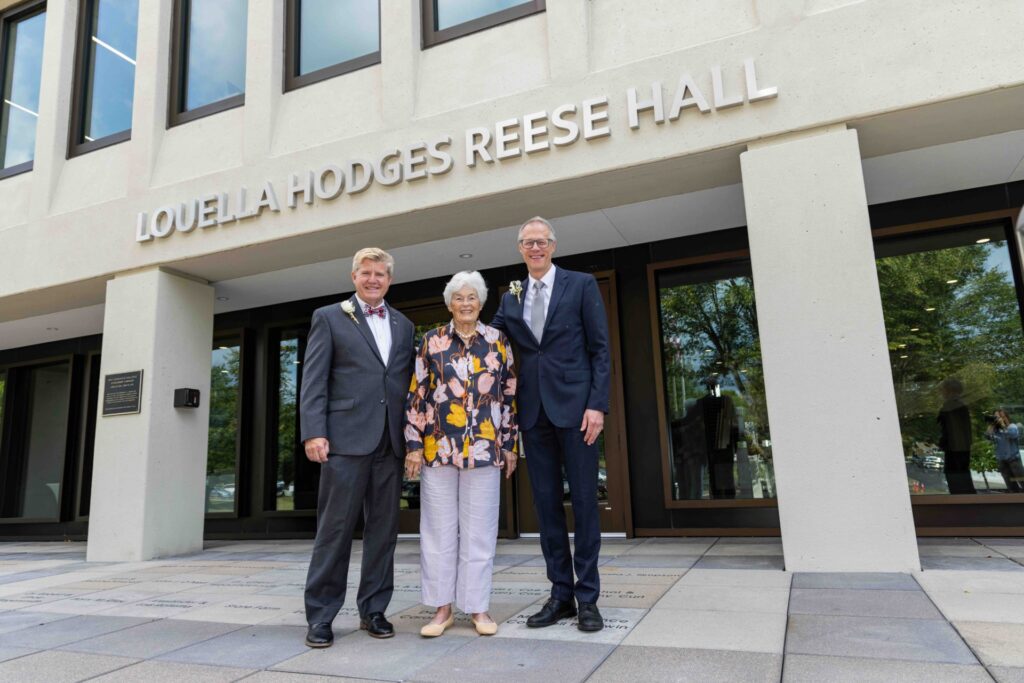
As a political science major, Berry thought he might influence education through government work or by studying law. But he became swept up in campus activities, getting involved in student government and the student activities council. His faculty advisor noticed.
“Earl Sheridan — I will remember him forever,” Berry said. “I talked to him about grad school, and he said to me, ‘You seem to be very invested in the college experience. Have you ever considered that as a career pathway?’”
Berry laughed and asked, “Is that a real job? How does that happen?”
Sheridan explained the different roles in higher education — dean of students, director of student activities — and suggested that Berry talk to their vice chancellor of student affairs.
Berry felt inspired by the meeting. Pursuing higher education administration felt right. He chose next to earn a master’s in college student personnel administration at Southern Illinois University.
His first, full-time job in the field landed him at Denison University in Granville, Ohio.
A PhD: The path to a presidency
It was 1991, and Berry was a program coordinator and advisor in Denison’s Office of Campus Activities. Higher education didn’t pay that well then, and although he loved the institution, he decided to try the for-profit route. He took a job in human resources at a large company headquarters.
“It was the one and only time in my life I stepped out of higher education,” he said. “It was not a positive experience, and it wasn’t the fault of the company. But culturally, how you work in corporate America versus what you do in higher education is so different.”
Higher education is about community engagement, community building, consensus building, he said. It’s not the same as a competitive market approach. His trial-and-error experiment reinforced who he really was. He knew he had to get back to higher education.
To do that, though, he felt a PhD was next. “Plus, I really enjoyed school,” he said. “And Ohio State has an exceptional program in the student affairs administrative realm.”
Berry flourished under the tutelage of faculty in the Higher Education and Student Affairs Program. “They were absolutely a phenomenal group of people, and sometimes it was just a little intimidating, because you wanted to ratchet up your performance and make them proud of you,” he said.
The influence of Professor Emerita Susan Robb Jones loomed large in his work. “She introduced me to the whole concept of service learning,” he said, “which became a very important part of who I am and what we do (at Central Ohio Technical College).
The late Professor Emeritus Robert ‘Bob’ Rodgers guided Berry through his dissertation, which focused on service learning partnerships between institutions of higher education and four nonprofit agencies.
The crux was to investigate the agencies’ perspective about why they wanted to involve university students in hands-on experiences. He asked questions that are relevant to his work today, such as: What are you looking for in partnering? What makes it a positive process? How do we leverage it for the common good?
As Rodgers’ last doctoral student before the professor retired, Berry sees his work today as carrying forward his advisor’s legacy and that of other faculty in the Higher Education Program. He named the late Professor Emeritus Leonard Baird as influential, as well as Associate Professor Tatiana Suspitsyna.
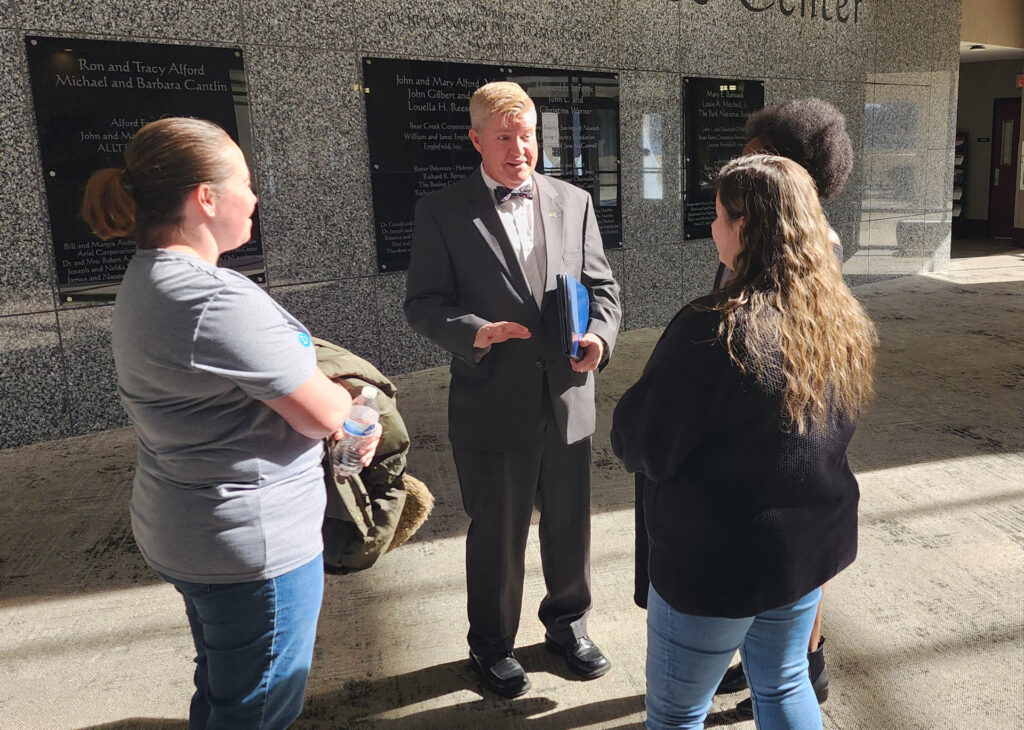
“They were (and are) extraordinary people in their field, but they take the time … to help people move forward in their vision,” Berry said.
Professor Scott Sweetland, also on Berry’s dissertation committee, provided foundational knowledge in finance that guides him yet today. Sweetland’s work “is exceptionally important to know as a higher education … practitioner,” Berry said.
“Ohio is more complex than most because of the way we use performance-based budgeting,” he said, “but many see it as an exemplar. So, the better you understand it, the better you can help others understand (it).”
Advice for graduates of the future
Today, Berry ties his expertise in the role of president back to what he learned during his PhD.
“It was becoming a critical thinker, applying those constructs of evolution,” he said. “How do you manage those complexities? How do you stay on top of it? How do you energize other people to be excited about and ready to do that, particularly in institutions of higher education, which sometimes become set in their ways?”
“That’s the one thing I learned quickly in this role. You can’t just tell people what to do. You have to explain why. That’s critically important.”
Emerging opportunities at COTC for students
Thanks to the growing industries and organizations in central Ohio, the programs drawing students to Central Ohio Technical College are:
- Engineering
- Healthcare
- Information technology
- Public safety
“The work you see us doing in the two-year college is offering those shorter-term credentialing programs that let people get their foothold in a career,” said Berry, president of the college.
In addition to companies like Intel, environmental companies that manufacture solar arrays and EV charging stations also are hiring graduates from the college’s engineering associate’s degree and certificate programs.
The college has its central campus in Newark, and branch campuses in Coshocton, Knox and Pataskala.
